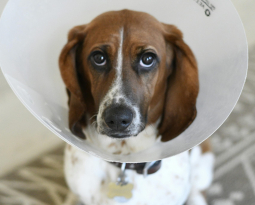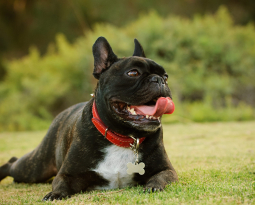Let’s dive right into it – how to prevent rabies in dogs. It’s simple.
How to Prevent Rabies in Dog
It’s easy. Guess what. You vaccinate them! That’s right rabies is preventable through a shot and so long as you are keeping them up to date on their vaccines you shouldn’t have anything to worry about. Another helpful tip is to keep your pet from getting into contact with wild animals. Always walk them on a leash, be aware of what’s around you. Animals that roam free are more likely to come into contact with a wild animal that has the disease.
So, get your shots and keep them up to date. For most states, that’s the law.
With that question answered quick let’s dive a bit deeper into rabies, what it is, how dogs contract it and more.
What is Rabies
Rabies is an incurable virus. It specifically attacks the brain and spinal cord and all mammals, dogs and human, are at risk of catching it. While it’s preventable and treatable if caught early one before symptoms develop, once the symptoms appear rabies is fatal.
How Does a Dog Get Rabies?
Rabies is in the saliva, often passed from creature to creature through a bite wound from an infected animal. It’s also possible for it to spread through licking if there is an open wound.
Rabies is most commonly transferred to dogs through contact with wild animals who have the virus, animals such as foxes, coyotes, raccoons, or bats. Thankfully, rabies isn’t necessarily common in dogs in the US, with only 400 to 500 cases cropping up each year. This is all because it is 100% preventable with vaccine.
What Are the Symptoms of Rabies?
Remember, if symptoms are present it’s already too late. So if you even think that your animal has been bitten by another and rabies is possible get them to the vet right away for treatment before it’s too late!
Signs of rabies include irritability, aggression, fever, excessive drooling, staggering, seizures, paralysis or more. Behavioral changes are also common, happy and excited dogs can be come sluggish, sometimes animals with rabies may be affectionate to an unnatural degree. As the virus proceeds, the dog may behave as if they are overstimulated, seeking out dark and quiet places to hide.
The most common, well known symptom of rabies is foaming at the mouth. It’s not present in all animals, sometimes excessive drooling. When the virus reaches its final stages seizures and paralysis are common, eventually breathing is no longer possible which causes death.
How Is Rabies Diagnosed? Treated?
Unfortunately rabies is not easily diagnosed. To be 100% certain testing requires brain tissue and a biopsy which means it can’t happen until the animal has already passed. And since once symptoms appear it is already too late to treat, the only option if you fear or suspect rabies is to get a quick booster of the rabies vaccine to decrease the change your dog will contract it.
However once your vet suspects that rabies has been passed and contracted, euthanasia is really the only option to prevent further spread and the pain of living through it.
What to Do if You Come Across a Rabid Animal
If you see an animal acting strangely and you suspect rabies you need to call animal control and the local health departments. Don’t attempt to capture the animal yourself. Keep your distance from the animal, warn others, and make sure that the proper authorities know.
If you suspect your pet has come into contact with an animal with rabies, or you fear you have been bitten by one you need to take immediate action. If you were bitten, quickly wash the bite with soap and water and get into the doctor’s immediately.
Rabies is easy to prevent with vaccines, but if you’re not vaccinated you need to act fast.







